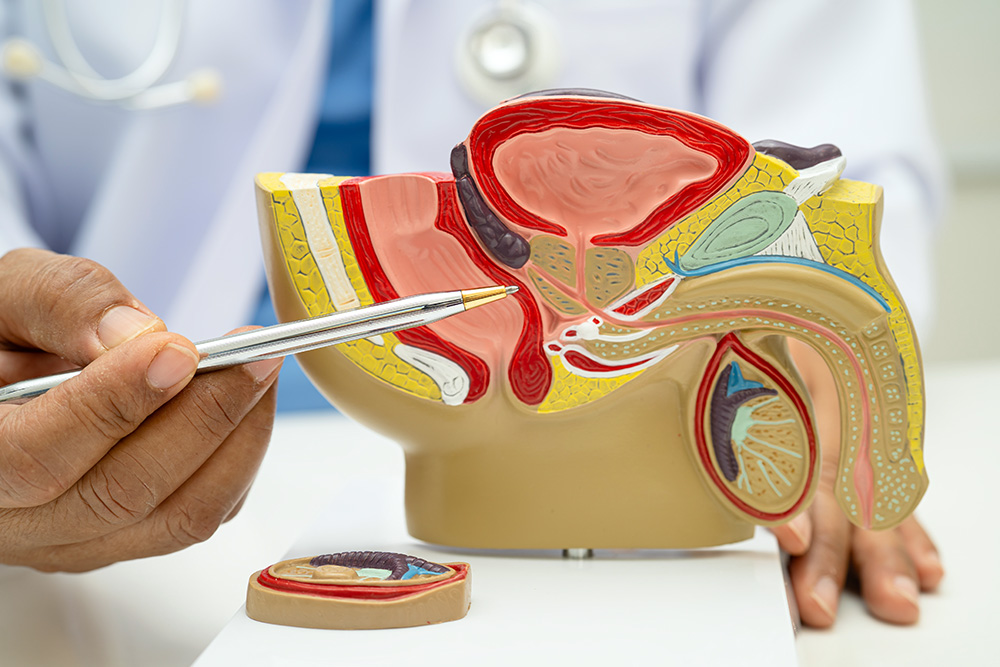Men and those assigned male at birth should have regular prostate exams starting at around age 45. Monitoring the health of this gland is crucial to intervene earlier should the need arise. As September is Prostate Health Month, Safe Harbor is working to keep our community informed. Below, we will discuss some important information regarding prostate cancer and other related health issues.
What is the Prostate?
The prostate is a gland in the body, found in those assigned male at birth. It is found between the bladder and the rectum. The gland’s primary function is to assist with ejaculation. It adds fluid to your sperm, and the muscles of the gland help push semen out of the urethra (Source: Cleveland Clinic).
Generally, the gland is the size of a walnut. However, it can enlarge over time to the size of a lemon. This most commonly occurs after the age of 40. While this growth isn’t always cancer, it can affect some aspects of your daily life. Most commonly, it affects your ability to release your bladder fully and efficiently.
Common Prostate Conditions in Older Men
There are a few conditions that your doctor will try to diagnose if your prostate screening shows an enlarged prostate. Benign Prostatic Hyperplasia (BPH) is a non-cancerous enlargement of the prostate that occurs to some degree in most men as they age. Prostate cancer is the second most common type of cancer in men. With early detection, it is often highly curable, with one of the best rates of recovery. Additional glandular conditions are generally caused by inflammation. This can often be caused by bacterial infection or UTIs.
Common Signs of Prostate Issues
The following symptoms may indicate prostate issues, especially if you are experiencing more than one of these:
- Pain in the penis, testicles, or perineum
- Erectile dysfunction
- Frequent urges to urinate
- Slow or dripping urine stream
- Blood in urine or semen
- Chronic lower back or hip pain
- Difficulty starting urination
- Frequent bathroom trips at night
Tips for a Healthy Prostate
Beyond regular screenings, there are changes in your daily life that can help reduce the risks of prostate-related conditions. Below, we will discuss some changes you can make to help reduce your risk factors.
Dietary Changes
Eating more fruits and vegetables in general can help you shed weight and limit gland enlargement. Additionally, limiting red meat and dairy can have a positive effect on your risk of developing a prostate-related condition. Many studies show that having a diet consisting of a variety of legumes, nuts, and other plant-based proteins can reduce your risk factors, as well. Reducing your weight to a healthy level can also be important for your overall health.
More Time in the Sun
Vitamin D from the sun can also limit glandular inflammation conditions and lower risk factors for prostate cancer. Be sure to use proper sun protection to limit your risk of skin cancer.
Regular Screenings with Your Doctor
Generally, those assigned male at birth should have regular screenings for prostate issues after turning 45. If you are in a high-risk group, you should begin screenings around 40. Higher risk factors can include:
- Exposure to Agent Orange
- Survivors of other cancers
- History of other cancers in your family, such as prostate, breast, colon, endometrial, or pancreatic.
- Those of African American descent
- Those with a known familial cancer syndrome
- Those with a known genetic predisposition for cancer
Safe Harbor Healthcare Services does not provide medical, healthcare, or financial advice via articles. This material has been prepared for informational purposes only. It is not intended to provide and should not be relied on for advice.
Safe Harbor Healthcare Services has provided excellent home care on Staten Island since 1967. Our services help older and disabled individuals live safely and independently while giving their families the peace of mind they need. For more information, contact us or call (718)-979-6900.

